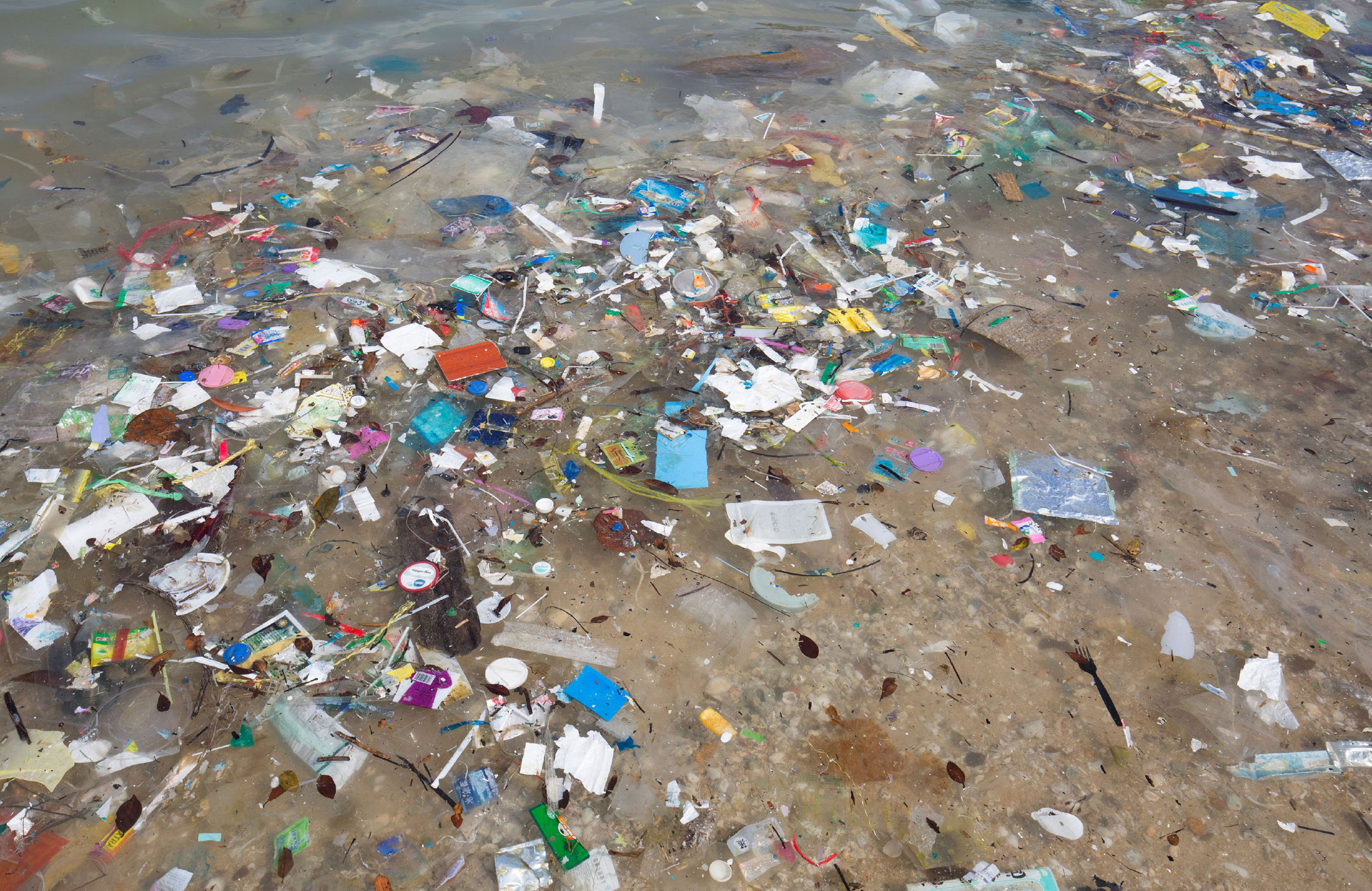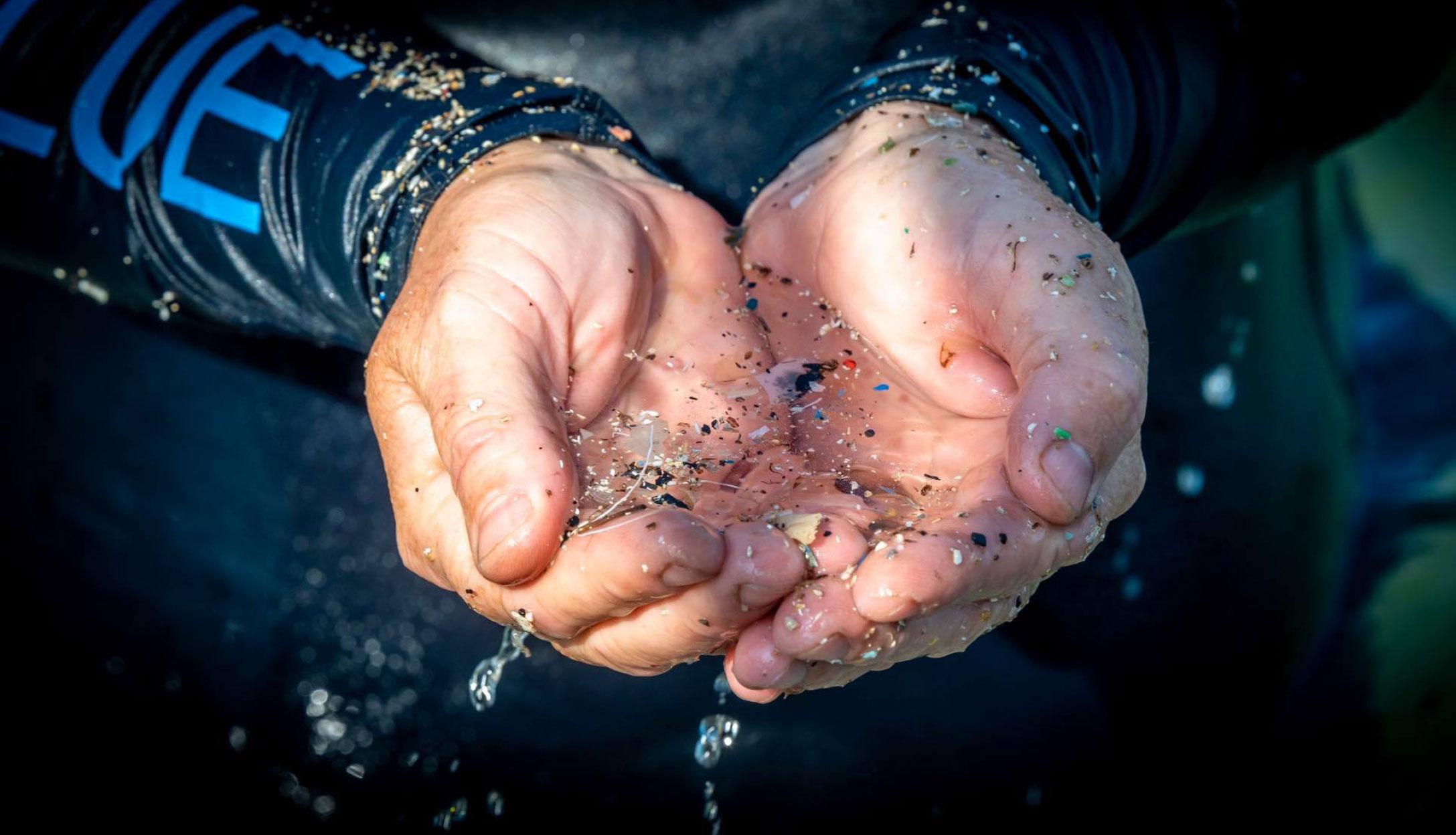Full Text
COVID-19. The disease has nearly forced the world to a full stop. Cities have emptied, traffic has halted, schools have closed. Beyond causing a serious respiratory illness, the SARS-CoV-2 virus has brought a new, and largely overlooked, threat to human health: more potentially harmful microplastics in the environment, this time from discarded personal protective equipment (PPE).
PPE used to fight COVID-19 becomes plastic waste after its use, adding to the immense worldwide problem of plastic pollution, according to a 2020 World Wide Fund for Nature (WWF) Italy study. That plastic “invades our streets, our sidewalks and our parks,” states the report.
Researchers at Italy’s Polytechnic of Turin estimated that in Phase 2 of the country’s COVID-19 reopening (in which activities are gradually restarted), 1 billion masks and half a billion disposable gloves each month were needed. “These are very high quantities that require those who use them to assume responsibility for their disposal,” according to WWF Italy documents. “Each of us must make an effort to ensure that we proceed with the least possible impact on nature.”
If even only 1% of the masks were discarded incorrectly, that would result in 10 million masks per month dispersed in various ecosystems. With the weight of each mask about 4 grams, more than 40,000 kilograms of plastic would soon accumulate.
“Just as citizens have acted responsibly in containing the virus by staying at home, now they must prove equally responsible for the management of individual protection devices,” says WWF Italy president Donatella Bianchi. “Once these devices become waste, they have a devastating effect on our natural environments.”
PPE is just one of the sources of plastic now ubiquitous in the environment around the globe. Eventually, plastic products break down into microplastics; they then contaminate air, water, and soil. Researchers are now intensifying efforts to understand the human health costs of microplastics.
In January 2020, the US National Academies of Science, Engineering, and Medicine in Washington, DC, hosted one of the first workshops on the environmental health effects of microplastics. Since then, the COVID-19 epidemic has made the problem even worse.
|
|
Masks Washing Ashore
In the Mediterranean alone, 570,000 tons of plastic end up in the sea every year. It is the equivalent of 33,800 plastic bottles thrown into the water every minute, according to Bianchi. That’s pre-COVID-19, however. Now, she says, “we ask that institutions prepare appropriate collectors for masks and gloves and install them near ports and in parks, around villas and at supermarkets. It would be an advantage for the environment—and for our health.”
OceansAsia, a marine conservation organization headquartered in Southeast Asia, maintains a remote, boat-access-only test beach on the Soko Islands south of Lantau, Hong Kong. Twice each month, OceansAsia researchers visit the beach to carry out microplastics surveys. “Because the area is so distant, all the plastic there has its origins in the sea,” says Teale Phelps Bondaroff, OceansAsia’s director of research. “In late February, about six weeks after wearing masks became a widespread practice in Hong Kong, much to our surprise we started noticing a massive influx of surgical masks.”
Since then, he says, OceansAsia scientists have continued to find surgical masks “in considerable numbers at beaches around Hong Kong.” Gary Stokes, Oceans-Asia’s director of operations, investigated another beach on April 25, 2020—and came across dozens of masks in less than five minutes. Stokes returned to the beach in early June and again found handfuls of masks. “The masks break down into smaller and smaller pieces of microplastic,” Phelps Bondaroff says.
Researchers often discover the source of the plastic by identifying certain characteristics, for example, a wrapper from a local restaurant or a pill bottle with the name of the prescribing doctor. “While that’s not possible for face masks,” says Phelps Bondaroff, “we can look at similar items on the sand, along with the location of the beach and its tidal patterns, to help trace the masks’ origins.”
The scientists think surgical masks retrieved from Soko Islands beaches likely came from Hong Kong or the nearby Pearl River system. “When you suddenly have a population of 7 million people wearing one to two masks each day, the amount of plastic discarded is going to be substantial,” says Stokes.
That is bad news indeed. Researchers recently discovered that microscopic bits of plastic in the ocean are carried aloft in sea spray, where they are ferried far and wide. More than 136,000 tons of microplastics are blowing ashore on the sea breeze every year, scientists at the UK’s University of Strathclyde reported in a June 2020 paper in PLoS ONE.
“Plastic pollution has entered every ecosystem, with implications for interactions at every level of biological organization,” writes Chelsea Rochman of the University of Toronto in the September 2020 issue of Oceanography. Rochman gave the 2020 Roger Revelle Commemorative Lecture at the US National Academy of Sciences. “There is no doubt that…plastic debris can have an impact on wildlife, and compelling evidence suggests that macroplastics are already impacting marine populations, species, and ecosystems.” Those ecosystems include humans.
In medical masks, it is a case of circular microplastics; to protect human health, we have ultimately endangered human health. Microplastics pose a potential health problem on their own, but treating human diseases is adding to it.
|
|
Discarded Face Masks Clog the Seas
The ocean will be flooded with an estimated 1.56 billion face masks in 2020, according to a report released in December 2020 by OceansAsia. That will result in an additional 4,680–6,240 metric tons of marine plastic pollution, states Phelps Bondaroff, lead author of Masks on the Beach: The Impact of COVID-19 on Marine Plastic Pollution. The masks will take as long as 450 years to break down, slowly turning into microplastics while impacting marine life and ecosystems.
To arrive at the estimate, the report’s authors used a global production number of 52 billion masks in 2020, a conservative loss rate of 3%, and the average weight of 3–4 grams of a single-use polypropylene surgical face mask.
“The 1.56 billion face masks that will likely enter our ocean in 2020 are just the tip of the iceberg,” says Bondaroff. “The 4,680 to 6,240 metric tons of face masks are just a small fraction of the estimated 8 to 12 million metric tons of plastic that end up in our ocean each year.”
Plastic consumption, which has been steadily rising for years, has increased significantly as a result of the COVID-19 pandemic, he says.
“Hygiene concerns and greater reliance on take-away food had led to increased use of plastics, particularly plastic packaging,” adds Stokes. “Meanwhile, measures designed to reduce plastic consumption, like single-use plastic bag bans, have been delayed, paused, or rolled back.”
The use of PPE, in particular face masks, has become a common tool for preventing the spread of the virus, with many jurisdictions mandating the wearing of masks in public. The production of PPE has expanded in an attempt to meet skyrocketing demand, and PPE waste has also increased dramatically.
Single-use face masks are made from a variety of meltblown plastics and are difficult to recycle due to composition and the risk of contamination and infection. They enter the ocean when they are littered, when waste management systems are inadequate or non-existent, or when these systems become overwhelmed due to increased volumes of waste.
|
|
Plastic Use on the Rise
Consumer habits have shifted as a result of the COVID-19 pandemic. Virus concerns have led many people to prefer fruit and vegetables individually packaged over unpackaged items.
For example, in Italy, consumer spending on packaged mandarin oranges increased more than 111% in the first week of March 2020 as compared to the previous year. In Lithuania, the use of disposable plastics shot up by 250%–300%, with people throwing away personal protective equipment and discarding reusable bags and containers for fear of the virus. The trend toward disposable plastic items has been seen during previous outbreaks, OceansAsia scientists say.
“Marine plastic pollution in general is devastating our ocean,” says Stokes. “Plastic pollution kills an estimated 100,000 marine mammals and turtles, more than a million seabirds, and even greater numbers of fish, invertebrates, and other animals each year. It also affects fisheries and the tourism industry and costs the global economy an estimated $13 billion USD per year.”
OceansAsia scientists are asking people to dispose of masks correctly and reduce their overall consumption of single-use plastic. They are also calling on organizations around the world to foster innovation and the development of sustainable alternatives to single-use plastic masks, discourage littering by increasing fines, educate the public about responsible ways to dispose of masks, and repair and improve waste management systems to reduce losses and spillage.
“It is critical that we work to reduce our use of single-use plastics, and we all have a role to play,” says Phelps Bondaroff. “There are reusable and sustainable options for almost every single-use plastic item. Please be sure to dispose of all masks responsibly.”




